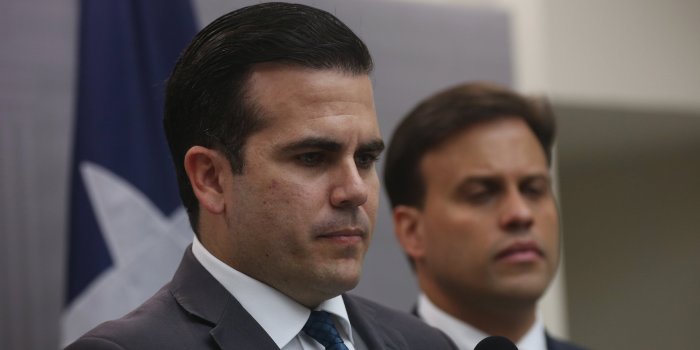Representantes de puerto rico: Cámara de Representantes de Puerto Rico
Directorio – Cámara de Representantes de Puerto Rico
Comunícate con las oficinas y dependencias marcando al cuadro telefónico. Las extensiones y números directos se encuentran a continuación.
Actas y Record, Ext. 2188
Gabriel. A. Perez Perez
787-725-0251
2do. Piso Capitolio
Administración, Ext. 3512
Manuel Díaz Espino
787-722-7895
3er. Piso Medicina Tropical
Administración de Documentos Legislativos y Administrativos, Ext. 3308
Ángel Díaz Cruz
787-977-3800
Sótano Antigua Comisión Estatal Elecciones
Archivo, Ext. 2401
Roberto Negrón Figueroa
787-724-3057
Sótano Capitolio
Asesores de Presidencia, Ext. 2716
Angélica Colón
787-622-4975
3er. Piso Medicina Tropical
Auditoría Interna, Ext. 1901
Wanda E. Ruiz Bonet
na
3er. Piso Medicina Tropical
Cable Visión, Ext. 5069
Juan Soto
na
Sótano Capitolio
Cafetería, Ext.
 na
na
FAZAA
787-725-6958
na
Capital Humano, Ext. 2456
Milka Cartagena Ortiz
787-724-4494
3er. Piso Medicina Tropical
Compras y Servicios, Ext. 3014
Luis B. Meléndez
787-721-5988
3er. Piso Medicina Tropical
Comunicaciones, Ext. 2521
Shirley Cordero Marrero
787-722-5688
Sótano Capitolio
Contratos, Ext. 3205
Felix Maldonado
787-725-0779
3er. Piso Medicina Tropical
Diario de Sesiones, Ext. 2999
Gilberto Hernández
787-721-5816
3er. Piso Medicina Tropical
Cuartel de la Policía PR, Ext. 2342
na
787-724-3955
1er. Piso Medicina Tropical
Donativo Legislativo, Ext. na
na
787-725-2040
na
Enfermería, Ext. na
na
787-723-4801
Sala Primera Ayuda
Finanzas y Presupuesto, Ext. 3037
José A. Delgado
787-724-2323
3er. Piso Medicina Tropical
Grabaciones , Ext.
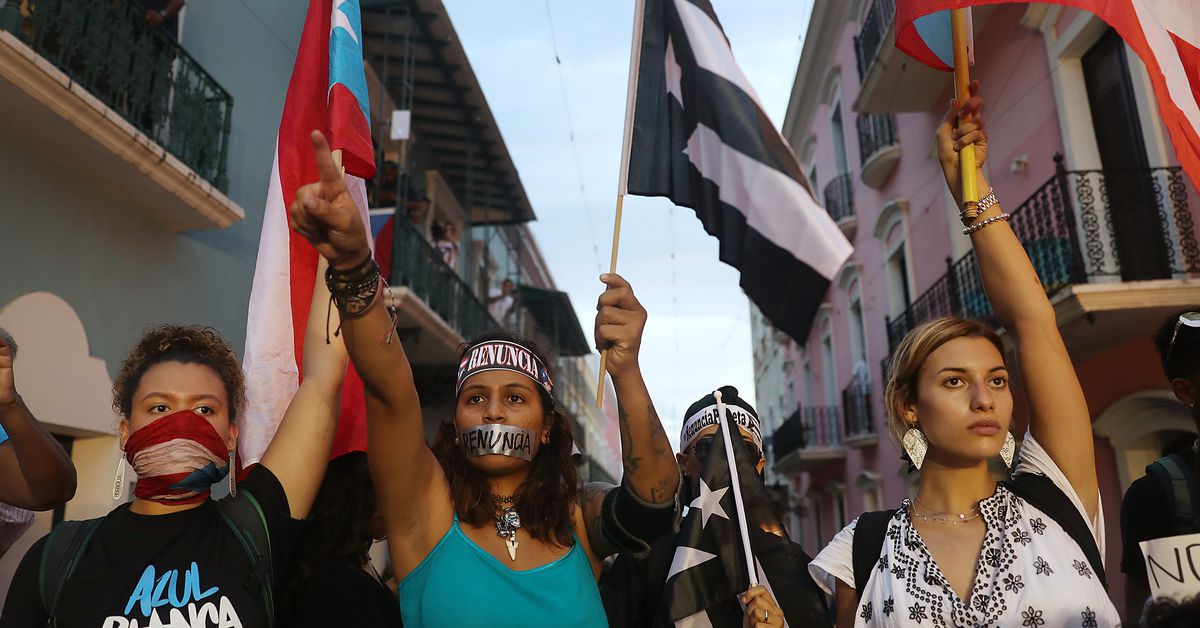 2560
2560
Edwin Vázquez Verdejo
na
Sótano Anexo
Impresión de Documentos, Ext. 3022
Gladys Burgos Torres
787-725-7682
Sótano Capitolio
Mantenimiento, Ext. 3514, 3515
Rafael Quiles
na
Sótano Anexo
Propiedad, Ext. 470, 473
José E. Rosario Cruz
787-722-4361
1er. Piso Antigua Comisión Estatal Elecciones
Protocolo y Eventos Especiales, Ext. 3220
Irma R. Moyeno Valle
787-724-1565
1er. Piso Antigua Comisión Estatal de Elecciones
Sargento de Armas, Ext. 2502
Miguel A. Arvelo Kuilan
787-723-0830
2do. Piso Capitolio
Secretaría , Ext. 2596
Javier Gómez
787-722-0830
2do. Piso Capitolio
Seguridad Interna Puesto 3 , Ext. 5036
na
na
Sótano Capitolio
Senado PR, Ext. na
Senado
787-724-2030
na
Servicios al Ciudadano, Ext. 3813
Walezka Morales Barbosa
787-725-0911
3er. Piso Medicina Tropical
Piso Medicina Tropical
Servicios Generales , Ext. 2449
Roberto L. Zayas
na
na
Oficina de Servicios Legislativos, Ext. na
Lcda. Mónica Freyre Florit
787-721-5200
Edificio Medical Arts
Superintendencia del Capitolio, Ext. na
César Hernández
787-725-6382
Medicna Tropical
Tecnología e Informática, Ext. 2430
Vladimir Maldonado
787-725-6382
2do Piso Medical Arts
Oficina Bases de Fé, Ext. 2036
Pastor Josué Carrillo
na
Anexo Medicina Tropical
Deja un mensaje
Deja tu mensaje en este formulario y nos comunicaremos con la mayor brevedad posible.
field is required
field is required
field is required
Visítanos
En nuestro horario de 8:00am a 5:00pm.
About | Congresswoman Jenniffer González-Colón
What is the Resident Commissioner?
The Resident Commissioner of Puerto Rico is a congressional Elected Official chosen by the People of Puerto Rico in each General Election to be their authorized representative before the Federal Government.
The Resident Commissioner is a Member of Congress, with the right to participate in the proceedings of the U.S. House of Representatives, introduce legislation, and speak before the chamber on behalf of Puerto Rico’s constituents. However:
- The Resident Commissioner may only vote in the Committees to which she or he belongs
- The Resident Commissioner has no right to vote for the final passing of Bills (not even those related to Puerto Rico) nor for election of the Speaker or other officials.
- There is no apportionment of districts by population for this office, so the one single person in the office represents five times as many citizens as the average Member of the House
Due to Puerto Rico being a US Territory and not a State, it is Congress that has full final authority to make policy decisions about the Island. This authority proceeds from the US Constitution and was affirmed when the US acquired Puerto Rico in the 1899 Treaty of Paris.
The Constitution of the United States, Article 4 Section 3, provides: “The Congress shall have Power to dispose of and make all needful Rules and Regulations respecting the Territory or other Property belonging to the United States(…)”
After the 1898 Spanish American War, the peace negotiations between the USA and Spain led to the signing of the 1899 Treaty of Paris by which the US took over a number of Spanish territories including Puerto Rico.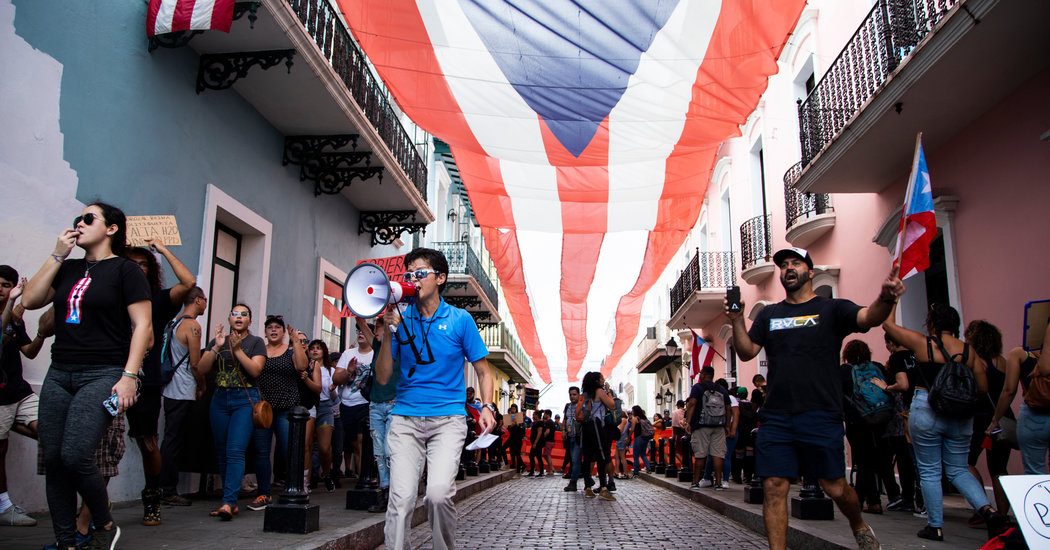 Article IX of the Treaty states as follows: “The civil rights and political status of the native inhabitants of the territories hereby ceded to the United States shall be determined by the Congress”.
Article IX of the Treaty states as follows: “The civil rights and political status of the native inhabitants of the territories hereby ceded to the United States shall be determined by the Congress”.
After two years of military rule, Congress passed in the year 1900 what was called the Foraker Actcreating a civil government for Puerto Rico. It is in Section 39 of this law that the office of Resident Commissioner first appears:
Section 39.- That the qualified voters of Porto Rico shall, on the first Tuesday after the first Monday of November, A.D. nineteen hundred, and every two years thereafter, choose a resident commissioner to the United States, who shall be entitled to official recognition as such by all Departments, upon presentation to the Department of State of a certificate of election of the governor of Porto Rico, and who shall be entitled to a salary, payable monthly by the United States, at the rate of five thousand dollars per annum: Provided, That no person shall be eligible to such election who is not a bona fide citizen of Porto Rico, who is not thirty years of age, and who does not read and write the English language.
(Under the Foraker Act all Puerto Rico elected officials served two year terms.)
At first, the Resident Commissioner was a post especially created for the territories of Puerto Rico and the Philippines, and the Law did not specify his responsibilities or rights in the House of Representatives, which led to being denied floor privileges or presence in congressional deliberations. It was not until 1904 that the House amended its Rules to grant the Resident Commissioner the same right to speak on the floor and to serve on committees as was accorded to the other Territorial Delegates.
On 2 March 1917 the next Organic Act, known as Jones Act, was signed. Among its provisions, this is most notable for extending American Citizenship to the people of Puerto Rico. But also, in its Article 36, it amended the election terms of the Resident Commissioner and explicitly made it Law that this official was to be treated as a Member of the US House of Representatives. With the passing of Public Law 81-600, on 3 July 1950, the Jones Organic Act was amended and renamed Puerto Rico Federal Relations Act keeping in place its provisions regarding the Resident Commissioner which are today codified, after further amendments, as 48 U. S.C. 891-894:
S.C. 891-894:
The qualified electors of Puerto Rico shall choose a Resident Commissioner to the United States at each general election, whose term of office shall be four years from the 3d of January following such general election, and who shall be entitled to receive official recognition as such commissioner by all of the departments of the Government of the United States, upon presentation, through the Department of State, of a certificate of election of the Governor of Puerto Rico.
No person shall be eligible to election as Resident Commissioner who is not a bona fide citizen of the United States and who is not more than twenty-five years of age, and who does not read and write the English language. In case of a vacancy in the office of Resident Commissioner by death, resignation, or otherwise, the governor, by and with the advice and consent of the Senate, shall appoint a Resident Commissioner to fill the vacancy, who shall serve until the next general election and until his successor is elected and qualified.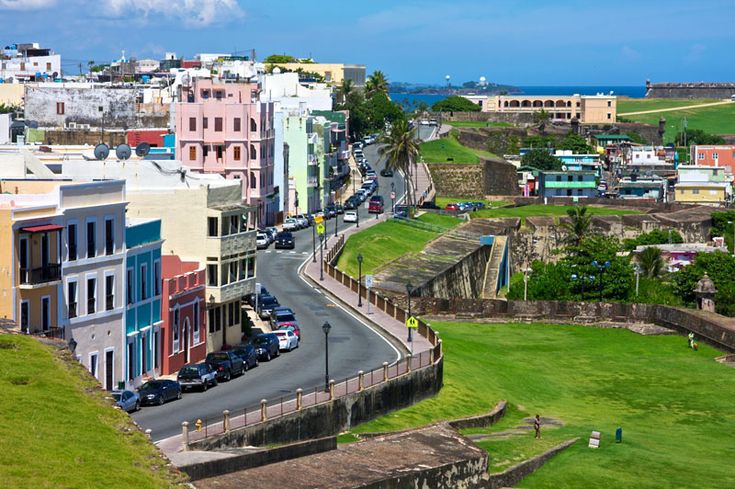
The Resident Commissioner shall receive a salary payable monthly by the United States. He shall be allowed the same sum for stationery and for the pay of necessary clerk hire as is allowed Members of the House of Representatives of the United States. He shall be allowed the franking privilege granted Members of Congress.
The salary and traveling expenses of the Resident Commissioner from Puerto Rico to the United States shall be paid by the Chief Administrative Officer of the House of Representatives in the same manner as the salaries of the members of the House of Representatives are paid.
This makes the Resident Commissioner of Puerto Rico the only Member of Congress with a four-year elected term.
In keeping with the provisions of P.L. 81-600, the ratification in 1952 of the Constitution of Puerto Ricounder the Federal Relations Act did not affect the figure of the Resident Commissioner.
Since 1900 there have been 20 Resident Commissioners of Puerto Rico, the first one, Federico Degetau and the latest, Jenniffer González-Colón, both republicans and she the first woman to hold this post.
For more on the Resident Commissioners of Puerto Rico, go to the link on each of their names:
Federico Degetau y González 1862-1914; Republican Party; Congresses: 57th (1901-1903), 58th (1903-1905)
Tulio Larrínaga y Torres-Vallejo 1847–1917, Unionist Party; Congresses: 59th (1905–1907), 60th (1907–1909), 61st (1909–1911)
Luis Muñoz-Rivera 1859–1916; Unionist Party; Congresses: 62nd (1911–1913), 63rd (1913–1915), Congreso 64th (1915–1917)
Félix Córdova-Dávila 1878–1938; Unionist Party and Alliance Party; Congresses: 65th (1917–1919), 66th (1919–1921), 67th (1921–1923), 68th (1923–1925), 69th (1925–1927), 70th (1927–1929), 71st (1929–1931), 72nd (1931–1933)
José Lorenzo Pesquera 1882-1950, no party affiliation, 72nd Congress (1931–1933)
Santiago Iglesias-Pantín 1872–1939; United Republican and Socialist Coalition; Congresses: 73rd (1933–1935), 74th (1935–1937), 75th (1937–1939), 76th (1939).
Bolivar Pagán 1897–1961; United Republican and Socialist Coalition; Congresses: 76th (1939–1941), 77th (1941–1943), 78th (1943–1945)
Jesús Toribio Piñero 1897–1952 Popular Democratic Party; 79th Congress (1945–1946)
Antonio Fernós-Isern 1895–1974 Popular Democratic Party; Congresses: 79th (1946–1947), 80th (1947–1949), 81st (1949–1951), 82nd (1951–1953), 83rd (1953–1955), 84th (1955–1957), 85th (1957–1959), 86th (1959–1961), 87th(1961–1963), 88th (1963–1965)
Santiago Polanco-Abreu 1920–1988 Popular Democratic Party; Congresses: 89th (1965–1967), 90th (1967–1969)
Jorge Luis Córdova-Díaz 1907–1994 New Progressive Party; Congresses: 91st (1969–1971), 92nd (1971–1973)
Jaime Benítez 1908–2001 Popular Democratic Party; Congresses: 93rd (1973–1975), 94th (1975–1977)
Baltasar Corrada-del Río 1935-2018 New Progressive Party; Congresses: 95th (1977–1979), 96th (1979–1981), 97th (1981–1983), 98th (1983–1985)
Jaime B.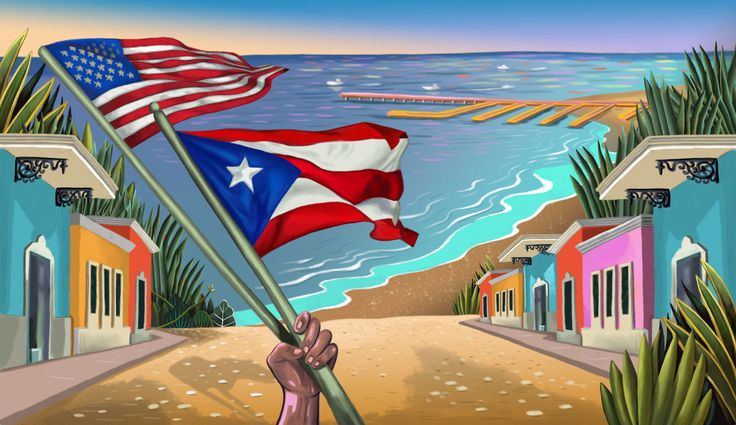 Fuster 1941–2007 Popular Democratic Party; Democrat Caucus; Congresses: 99th (1985–1987), 100th (1987–1989), 101st (1989–1991), 102nd (1991–92)
Fuster 1941–2007 Popular Democratic Party; Democrat Caucus; Congresses: 99th (1985–1987), 100th (1987–1989), 101st (1989–1991), 102nd (1991–92)
Antonio J. Colorado 1939- Popular Democratic Party; Democrat Caucus; 102nd Congress (1992–1993)
Carlos Antonio Romero-Barceló 1932- 2021 New Progressive Party; Democrat Caucus; Congresses: 103rd (1993–1995), 104th (1995–1997), 105th (1997–1999), 106th (1999–2001)
Aníbal Acevedo-Vilá 1962- Popular Democratic Party; Democrat Caucus; Congresses: 107th (2001–2003), 108th (2003–2005)
Luis Guillermo Fortuño 1960- New Progressive Party; Republican Caucus; Congressses: 109th (2005–2007), 110th (2007–2009)
Pedro Pierluisi 1959- New Progressive Party; Democrat Caucus; Congresses: 111th (2009–2011), 112th (2011–2013), 113th (2013–2015), 114th (2015–2017)
Jenniffer A. González Colón 1976- New Progressive Party; Republican Caucus; 115th Congress (2017–2019), 116th (2019-2020)
¿Qué es la figura del Comisionado Residente de Puerto Rico?
El Comisionado Residente de Puerto Rico es un funcionario electo por el Pueblo de Puerto Rico en las elecciones generales, quien tiene la autoridad de representar a la Isla ante el gobierno federal de los Estados Unidos.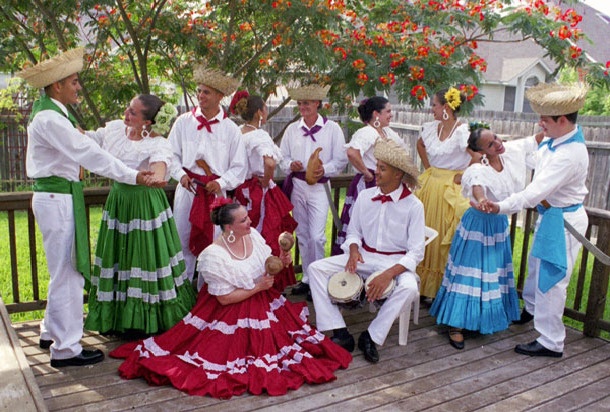
El Comisionado Residente es un miembro de la Cámara de Representantes de los Estados Unidos con derecho a participar en vistas y debates, presentar proyectos de ley, abogar por los intereses de su jurisdicción ante las agencias federales y dirigirse al pleno a nombre de sus representados, pero:
- Tiene voz pero NO derecho al voto en el pleno del Cuerpo para aprobar proyectos de ley (ni siquiera de su autoría o que afecten a Puerto Rico) ni nombramientos de funcionarios.
- Sí tiene derecho al voto sólo dentro de las comisiones a que pertenece.
- Por no repartirse distritos por población a los territorios, sólo una persona es responsable por todo Puerto Rico, representando a cinco veces más ciudadanos que el Representante promedio en la Cámara federal.
Por ser Puerto Rico un territorio de los Estados Unidos, es el Congreso quien tiene la autoridad sobre las decisiones sobre la Isla. Esta autoridad emana de la Constitución de los Estados Unidos y fue nuevamente expresa cuando los Estados Unidos adquirió a Puerto Rico bajo el Tratado de Paris de 1899.
La Constitución de los Estados Unidos, en su Artículo 4, Sección 3 establece que “El Congreso tendrá poder para disponer y hacer todas las Reglas y Reglamentos necesarios respecto del Territorio u otra Propiedad perteneciente a los Estados Unidos…”.
Luego de la Guerra Hispanoamericana de 1898, España y Estados Unidos firmaron un acuerdo de paz conocido como el Tratado de París donde la nación americana adquirió territorios que hasta entonces estaban bajo el dominio español, entre ellos Puerto Rico. En el Artículo IX del Tratado de Paris se expresa que “Los derechos civiles y la condición política de los habitantes naturales de los territorios aquí cedidos a los Estados Unidos se determinarán por el Congreso”.
Luego de dos años bajo un gobierno militar, el Congreso de los Estados Unidos aprueba la Ley Foraker en 1900 donde le otorga un gobierno civil a Puerto Rico. Ahí, en el Artículo 39, nace la figura del Comisionado Residente a los Estados Unidos:
Artículo 39.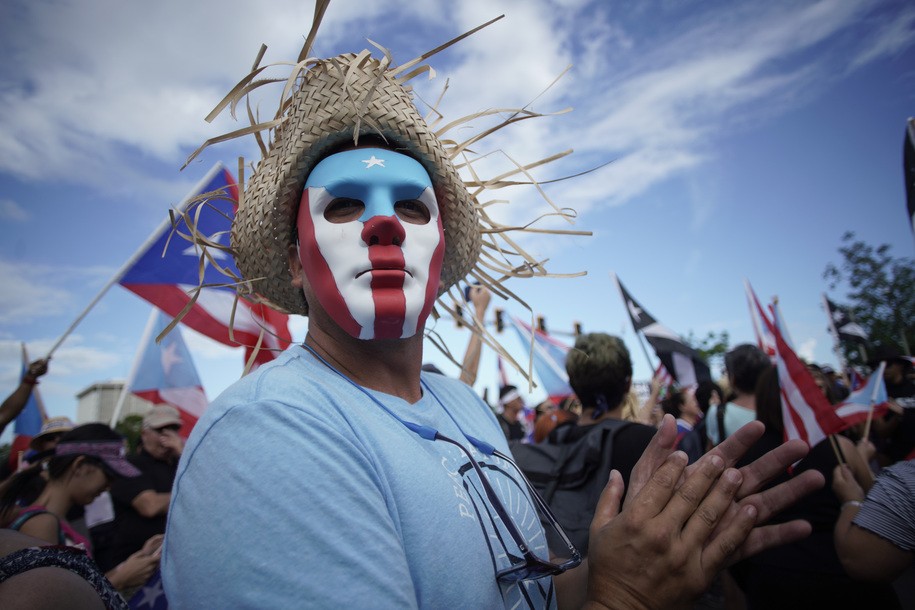 Los electores capacitados de Puerto Rico elegirán, el primer martes después del primer lunes de noviembre, del A.D. mil novecientos, y cada dos años después, un Comisionado a los Estados Unidos, quien tendrá derecho a reconocimiento oficial como tal por todos los Departamentos, a la presentación en el Departamento de Estado de un certificado de elección extendido por el Gobernador de Puerto Rico, y dicho Comisionado tendrá derecho a un sueldo, pagadero mensualmente por los Estados Unidos, a razón de cinco mil dólares por año. Disponiéndose, que ninguna persona será elegible para dicho cargo que no sea real y efectivamente vecino de Puerto Rico, mayor de treinta años y no sepa leer y escribir el idioma inglés.
Los electores capacitados de Puerto Rico elegirán, el primer martes después del primer lunes de noviembre, del A.D. mil novecientos, y cada dos años después, un Comisionado a los Estados Unidos, quien tendrá derecho a reconocimiento oficial como tal por todos los Departamentos, a la presentación en el Departamento de Estado de un certificado de elección extendido por el Gobernador de Puerto Rico, y dicho Comisionado tendrá derecho a un sueldo, pagadero mensualmente por los Estados Unidos, a razón de cinco mil dólares por año. Disponiéndose, que ninguna persona será elegible para dicho cargo que no sea real y efectivamente vecino de Puerto Rico, mayor de treinta años y no sepa leer y escribir el idioma inglés.
Bajo la Ley Foraker los funcionarios electos de Puerto Rico cumplían términos de dos (2) años. Inicialmente, el cargo de Comisionado Residente existió como un puesto especial para los territorios de Puerto Rico y Filipinas y no se especificó en la Ley que tuviera los mismos deberes y derechos que los Delegados Congresionales de los demás territorios, por lo cual no tenía privilegios de acceso al pleno del Cuerpo o las deliberaciones de comisiones.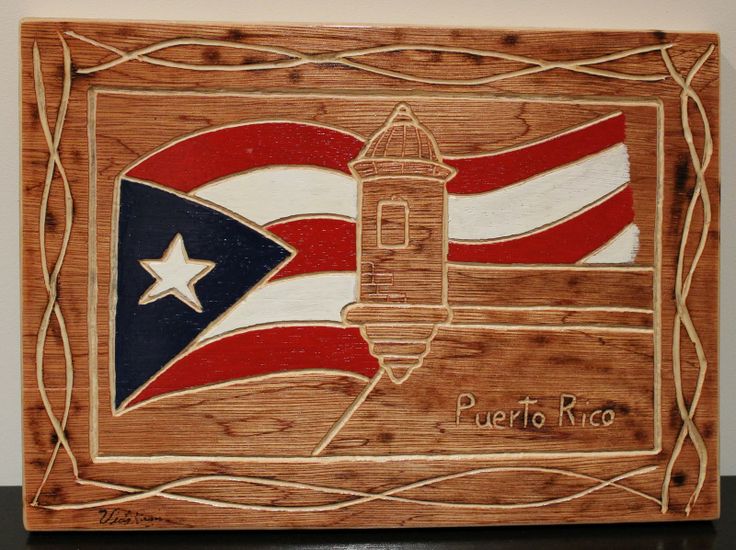 No fue sino hasta 1904 que la Cámara de Representantes, mediante enmienda a su Reglamento, le reconoce el derecho a voz en el pleno y a participación en las comisiones.
No fue sino hasta 1904 que la Cámara de Representantes, mediante enmienda a su Reglamento, le reconoce el derecho a voz en el pleno y a participación en las comisiones.
El 2 de marzo de 1917, se firma la Carta Orgánica conocida como Ley Jones que, entre otros decretos, otorga la ciudadanía americana a los habitantes de Puerto Rico. Esta Ley en su Artículo 36 enmienda el proceso de elección del Comisionado Residente y dispone de modo expreso su condición como delegado ante la Cámara de Representantes del Congreso. El 3 de julio de 1950 con la aprobación de la Ley Pública 81-600, se enmienda la Carta Orgánica Jones y cambia su nombre a Ley de Relaciones Federales con Puerto Rico, manteniendo en vigencia sus disposiciones sobre el puesto, las que, codificadas como 48 USC Secciones 891 a 894 según sus enmiendas posteriores, aún hoy rigen la figura del comisionado residente:
Los electores capacitados de Puerto Rico han de escoger en cada elección general un Comisionado Residente en los Estados Unidos por el término de cuatro años, que se contarán desde el día tres de enero siguiente a dichas elecciones generales, y quien tendrá derecho a reconocimiento oficial como tal Comisionado por todos los departamentos del Gobierno de los Estados Unidos, previa presentación, por conducto del Departamento de Estado, de un certificado de elección extendido por el Gobernador de Puerto Rico.
Ninguna persona será elegible para el cargo de Comisionado Residente si no es un ciudadano bona fide de los Estados Unidos y mayor de veinticinco años de edad, y si no sabe leer y escribir el idioma inglés. En caso de quedar vacante el cargo de Comisionado Residente por muerte, renuncia o por otra circunstancia, el Gobernador, con el concurso y consentimiento del Senado, nombrará un Comisionado Residente para cubrir la vacante, quien desempeñará el cargo hasta las próximas elecciones generales y hasta que su sucesor sea elegido y tome posesión.
El Comisionado Residente percibirá un sueldo pagadero mensualmente por los Estados Unidos. A dicho Comisionado se le concederá para gastos de despacho y pago del personal de oficina necesario, la misma suma que se concede a los miembros de la Cámara de Representantes de los Estados Unidos. Tendrá el privilegio de franqueo concedido a los miembros del Congreso. El salario y los gastos de traslado del Comisionado Residente de Puerto Rico a los Estados Unidos serán pagados por el oficial Administrador de la Cámara de Representantes de los Estados Unidos en las mismas condiciones que los de los miembros de la Cámara de Representantes.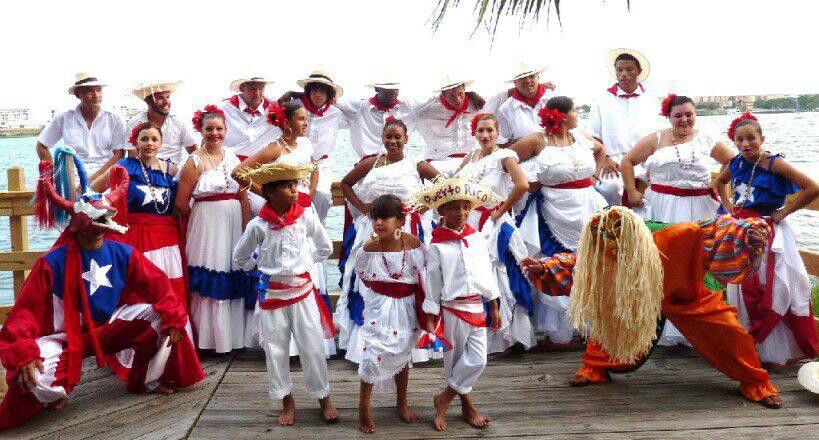
Esto hace al Comisionado Residente el único Miembro del Congreso con un término electivo de cuatro años.
Conforme a las disposiciones de la Ley 600, la aprobación de la Constitución de Puerto Rico en 1952 fue ratificada bajo la Ley de Relaciones Federales y no afectó la figura del comisionado residente.
Desde 1900 Puerto Rico ha tenido 20 comisionados residentes ante los Estados Unidos, siendo el primero Federico Degetau y la más reciente Jenniffer González Colón, ambos republicanos y esta última la primera mujer en ocupar el cargo.
Para conocer más sobre cada uno de los comisionados residentes de Puerto Rico, presione el nombre de cada uno.
Federico Degetau y González 1862-1914; Partido Republicano; Congreso 57 (1901-1903), Congreso 58 (1903-1905)
Tulio Larrínaga y Torres Vallejo 1847–1917, Partido Unionista; Congreso 59 (1905–1907), Congreso 60 (1907–1909), Congreso 61 (1909–1911)
Luis Muñoz Rivera 1859–1916; Partido Unionista; Congreso 62 (1911–1913), Congreso 63 (1913–1915), Congreso 64 (1915–1917)
Félix Córdova Dávila 1878–1938; Partidos Unionista y de la Alianza Puertorriqueña Unionista; Congreso 65 (1917–1919), Congreso 66 (1919–1921), Congreso 67 (1921–1923), Congreso 68 (1923–1925), Congreso 69 (1925–1927), Congreso 70 (1927–1929), Congreso 71 (1929–1931), Congreso 72 (1931–1933)
José Lorenzo Pesquera 1882-1950, sin partido, Congreso 72 (1931–1933)
Santiago Iglesias Pantín 1872–1939 Electo por la Coalición entre Partido Socialista y el Partido Unión Republicana; presidente del Partido Socialista; Congreso 73 (1933–1935), Congreso 74 (1935–1937), Congreso 75 (1937–1939), Congreso 76 (1939–1941).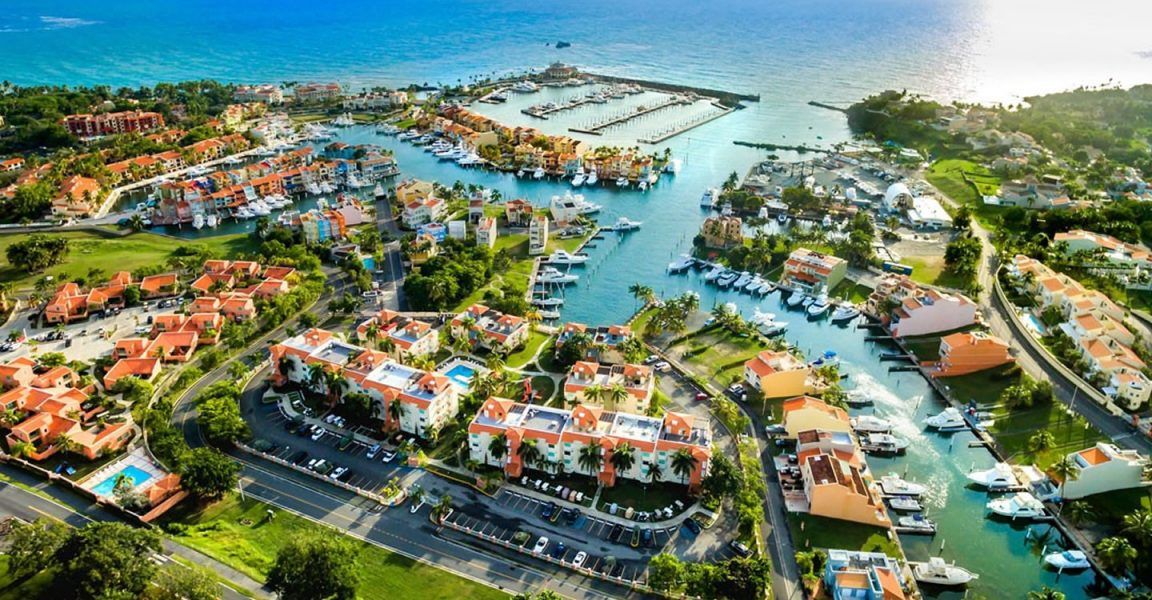
Bolivar Pagán 1897–1961 Electo por la Coalición entre Partido Socialista y el Partido Unión Republicana; presidente del partido SocialistaCongreso 76 (1939–1941), Congreso 77 (1941–1943), Congreso 78 (1943–1945)
Jesús Toribio Piñero 1897–1952 Partido Popular Democrático; Congreso79 (1945–1947)
Antonio Fernós-Isern 1895–1974 Partido Popular Democrático; Congreso 79 (1945–1947), Congreso 80 (1947–1949), Congreso 81 (1949–1951), Congreso 82 (1951–1953), Congreso 83 (1953–1955), Congreso 84 (1955–1957), Congreso 85 (1957–1959), Congreso 86 (1959–1961), Congreso 87(1961–1963), Congreso 88 (1963–1965)
Santiago Polanco-Abreu 1920–1988 Partido Popular Democrático; Congreso89 (1965–1967), 90 (1967–1969)
Jorge Luis Córdova-Díaz 1907–1994 Partido Nuevo Progresista; Congreso 91 (1969–1971), 92 (1971–1973)
Jaime Benítez 1908–2001 Partido Popular Democrático; Congreso 93 (1973–1975), Congreso 94 (1975–1977)
Baltasar Corrada-del Río 1935- 2018 Partido Nuevo Progresista; Congreso 95 (1977–1979), Congreso 96 (1979–1981), Congreso 97 (1981–1983), Congreso 98 (1983–1985)
Jaime B.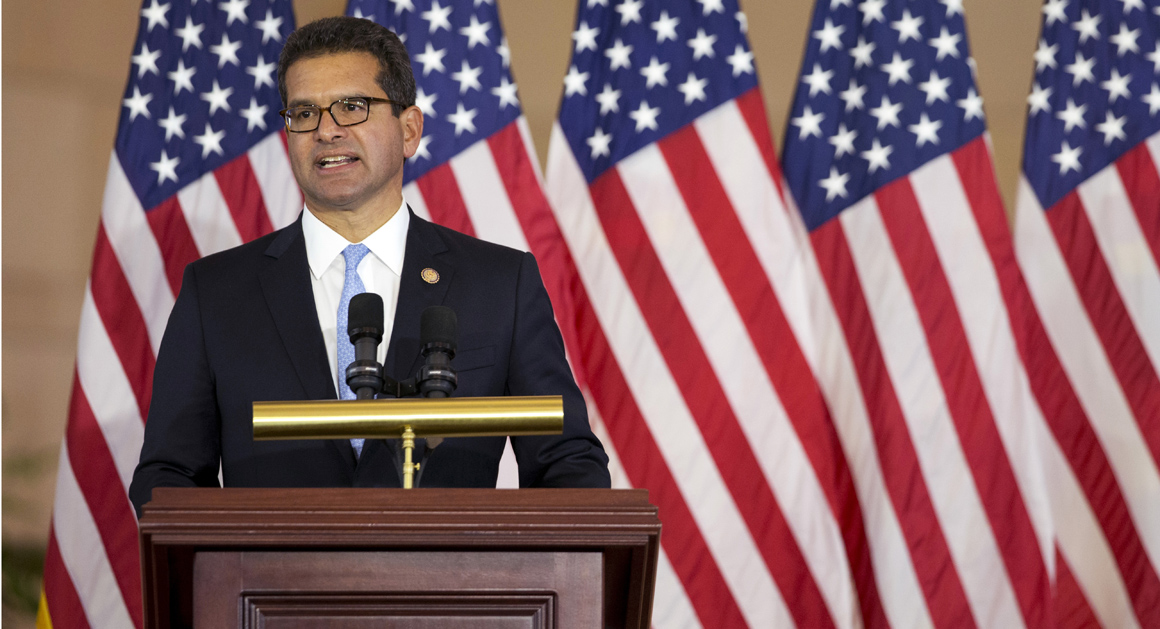 Fuster 1941–2007 Partido Popular Democrático; miembro del caucus Demócrata; Congreso 99 (1985–1987), Congreso 100 (1987–1989), Congreso 101 (1989–1991), Congreso 102 (1991–1993)
Fuster 1941–2007 Partido Popular Democrático; miembro del caucus Demócrata; Congreso 99 (1985–1987), Congreso 100 (1987–1989), Congreso 101 (1989–1991), Congreso 102 (1991–1993)
Antonio J. Colorado 1939- Partido Popular Democrático; miembro del caucus Demócrata; Congreso 102 (1991–1993)
Carlos Antonio Romero-Barceló 1932-2021 Partido Nuevo Progresista; miembro del caucus Demócrata; Congreso 103 (1993–1995), 104 (1995–1997), 105 (1997–1999), 106 (1999–2001)
Aníbal Acevedo-Vilá 1962- Partido Popular Democrático; miembro del caucus Demócrata; Congreso 107 (2001–2003), 108 (2003–2005)
Luis Guillermo Fortuño1960- Partido Nuevo Progresista; miembro del caucus Republicano; Congreso 109 (2005–2007), 110 (2007–2009)
Pedro Pierluisi 1959- Partido Nuevo Progresista; miembro del caucus Demócrata; Congreso 111 (2009–2011), 112 (2011–2013), 113 (2013–2015), 114 (2015–2017)
Jenniffer A. González Colón 1976- Partido Nuevo Progresista; miembro del caucus Republicano; Congreso 115 (2017–2018), Congreso 116 (2019-2020)
why the Commonwealth of Puerto Rico never became a US state and did not gain independence The former colony of Spain came under the control of Washington.
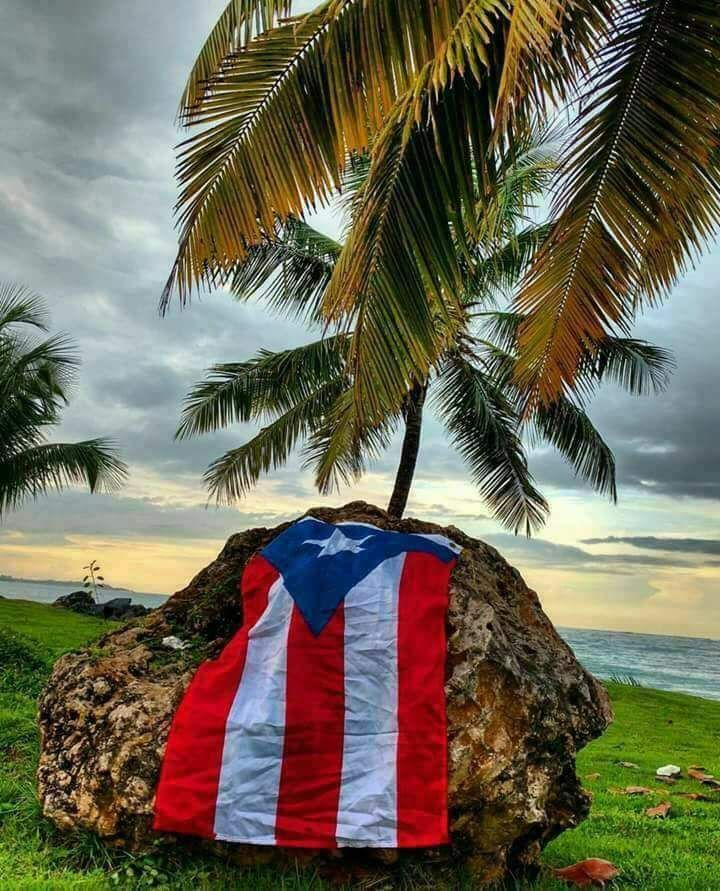 Despite the fact that 120 years have passed since then, the Commonwealth of Puerto Rico has never become either an American state or an independent country, retaining the intermediate status of the so-called associated state. Experts attribute this to the fact that official Washington does not want to lose full control over the island because of its geostrategic position, but at the same time does not want to take responsibility for its future fate.
Despite the fact that 120 years have passed since then, the Commonwealth of Puerto Rico has never become either an American state or an independent country, retaining the intermediate status of the so-called associated state. Experts attribute this to the fact that official Washington does not want to lose full control over the island because of its geostrategic position, but at the same time does not want to take responsibility for its future fate.
Today, many people associate Puerto Rico with the hits of Luis Fonsi and spacious clean beaches. However, behind external well-being is a difficult history, in which there were wars, and uprisings, and genocide, and a century of political uncertainty.
Indian tragedy
According to archaeologists, the first people reached the coast of Puerto Rico about 4 thousand years ago. These were South American Indians who reached the islands from the banks of the Orinoco River. This was followed by several more waves of migration from the mainland. From the last of them at the end of the 1st millennium AD. Arawaks arrived on the island and quickly became the dominant ethnic group.
From the last of them at the end of the 1st millennium AD. Arawaks arrived on the island and quickly became the dominant ethnic group.
When Christopher Columbus was the first European to reach the future of Puerto Rico in 1493, there were estimated to be between 30,000 and 60,000 Indians living there. In 1508, the first Spanish colony was founded on the island, originally named San Juan, whose authorities actively converted the indigenous population into slaves. As a result of the activities of the colonists, by 1530 only about a thousand Indians remained on the island. The rest were either killed or died from European diseases and overwork.
- Arawak Indians
- © Wikimedia
The Spaniards made many Indian women their wives and concubines (later on, apparently, they were no longer taken into account in the censuses as representatives of the indigenous population).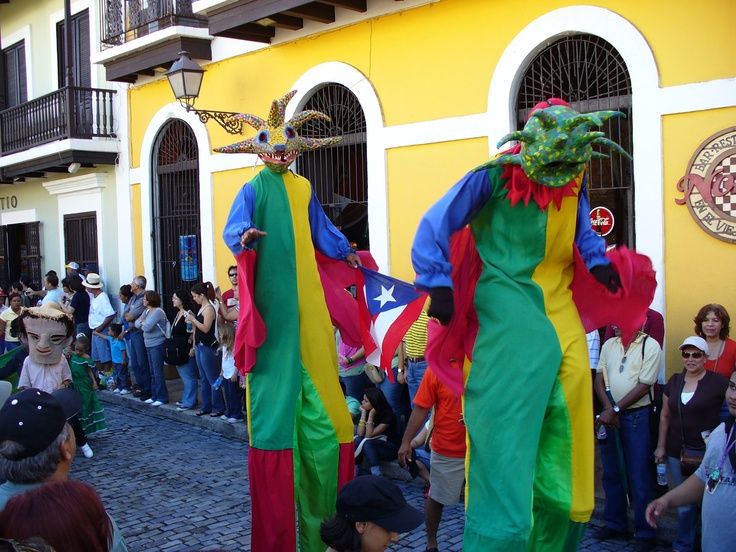 Therefore, genetic studies show that in the female line, many Puerto Ricans are descended from Indian women. Against the background of the mass death of the Indians, from 1513, slaves from Africa began to be brought to the island.
Therefore, genetic studies show that in the female line, many Puerto Ricans are descended from Indian women. Against the background of the mass death of the Indians, from 1513, slaves from Africa began to be brought to the island.
Spanish rule
Initially, the toponym Puerto Rico was attached to a small coastal island, which became the base of the first colonists. However, for some reason, Spanish sailors began to call the main island in the same way, formally bearing the name of San Juan. The settlers soon decided that there was no point in resisting the established tradition, and fixed the new name on the map. And the name of San Juan went to the central city of the island, which in the twentieth century became the capital of the Commonwealth.
Also related
“The Spaniards destroyed a great civilization”: how the Inca empire fell at the hands of the conquistadors
On July 26, 1533, the Spanish conquistadors led by Francisco Pizarro executed the Inca ruler Atahualpa, despite the payment.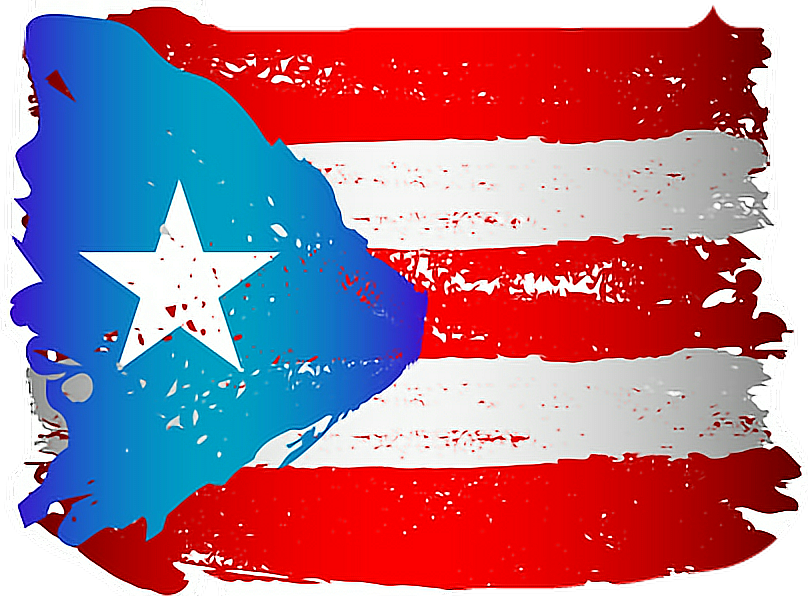 ..
..
In the 16th-18th centuries, Puerto Rico was subjected to fierce attacks by the British, French, Dutch, and attacks by pirates. After their first devastating raids, the Spaniards drew the necessary conclusions: powerful forts were erected on the island, which housed large garrisons, thanks to which the Spanish monarchy managed to keep Puerto Rico under its control for almost 400 years.
In the 17th century, due to the fact that Madrid had more promising colonies in the American mainland, in Cuba and Hispaniola, the flow of immigrants to Puerto Rico was sharply reduced. The island was one of the least populated possessions of the Spanish crown. In 1765, only about 45 thousand people lived on it.
During the Napoleonic Wars and the occupation of the Iberian Peninsula by the French, the Spanish government, in opposition to Bonaparte, declared Puerto Rico a province and granted Spanish citizenship to the inhabitants of the island. In 1815, a law was passed granting benefits to persons wishing to move to Puerto Rico from mainland Spain and other European countries.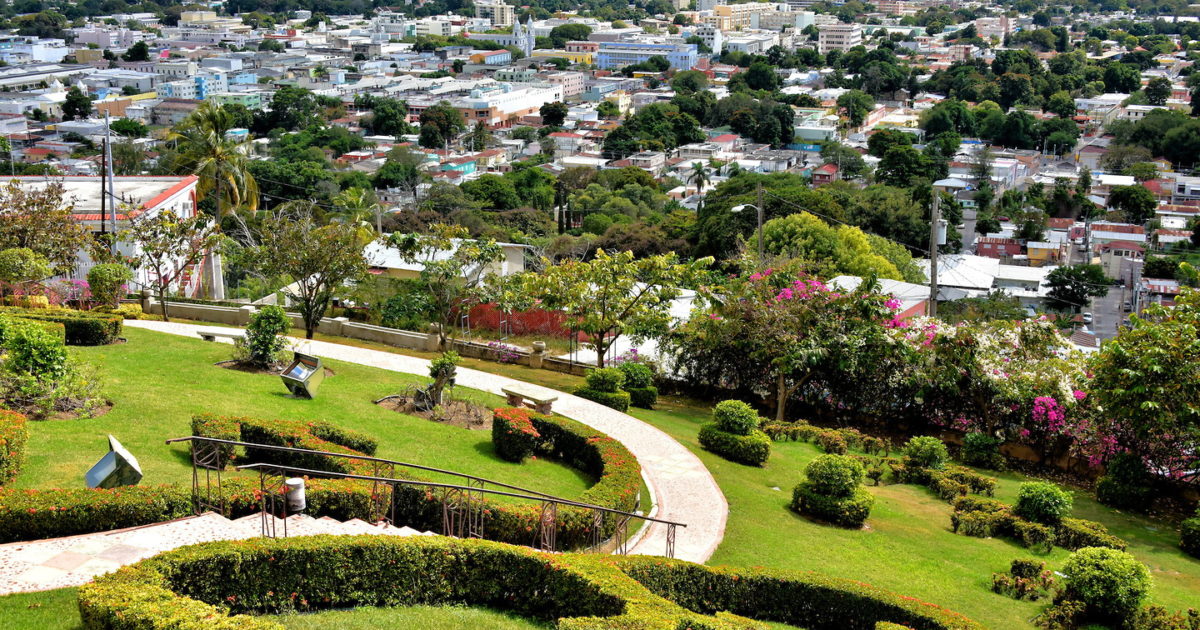
- Decree of the Spanish monarch regarding Puerto Rico, 19th century
- © Wikimedia
The island has experienced rapid economic growth. However, when it became clear that Napoleon was finally defeated, the Spanish authorities curtailed the reforms and returned the status of an ordinary colony to Puerto Rico. In the 18th and 19th centuries, several major slave uprisings took place on the island, but none of them were successful.
Due to the influx of immigrants in the second half of the XIX century, the population of Puerto Rico reached almost 600 thousand people. However, over 80% of them were illiterate and lived in poverty. In 1868, the inhabitants of the island rebelled against Spanish rule. The speech was suppressed by the military, but it forced official Madrid to grant limited autonomy to the island and expand the civil rights of its population.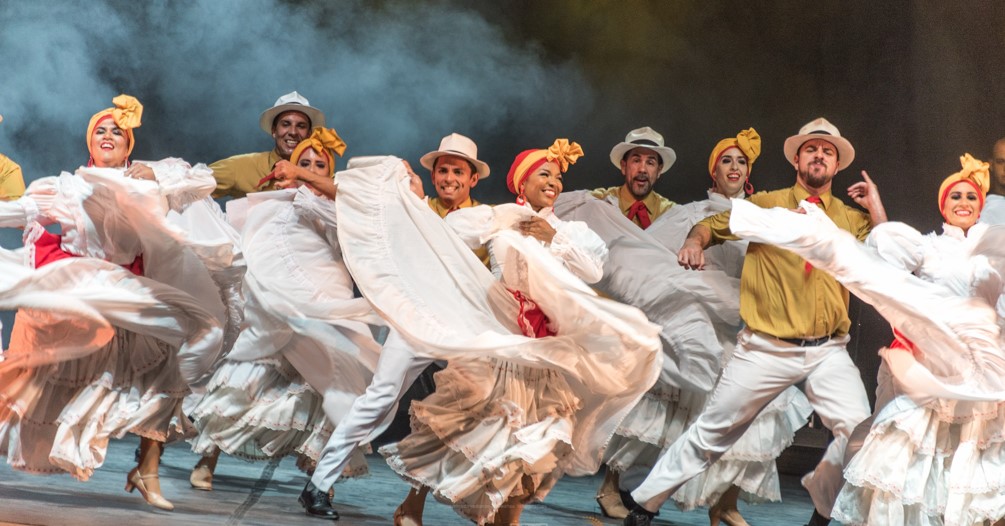
As a result of a new uprising in 1897, the Spanish authorities agreed to the formation of an autonomous government in Puerto Rico, which had complete freedom in the affairs of local self-government. But it did not have time to start full-fledged reforms – a war broke out on the island.
Under US rule
At the end of the 19th century, American big business began to invest heavily in the economy of the Caribbean and the Pacific Islands. The merchants made no secret of their interest in having these territories come under the control of Washington, and began to put pressure on the US government accordingly. Detachments of American “volunteers” went to Cuba, where an anti-Spanish uprising began in 1895.
In early 1898, the American battleship Maine arrived there, ostensibly to “protect American citizens”. On February 15, an explosion occurred on the ship, and it sank. Despite the fact that the causes of the incident were not established, American propaganda used it as a casus belli, accusing the Spaniards of sabotage.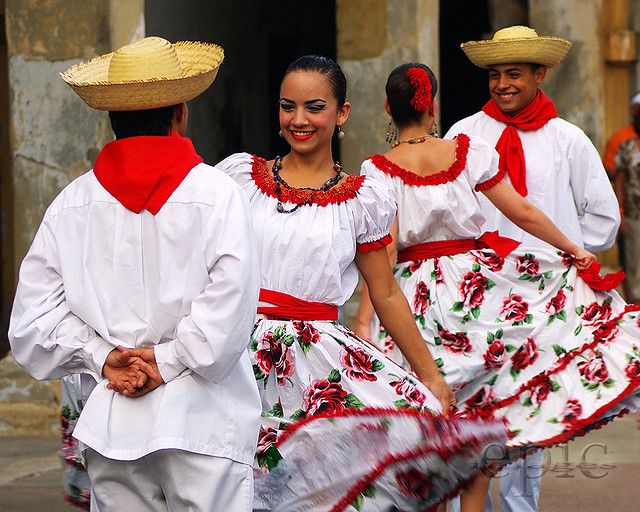
Research conducted in the 20th century showed that the ship most likely died from the detonation of ammunition as a result of a fire on board. Some scientists even admitted that this could have happened as a result of a provocation. However, in 1898 years ago, no one knew about it. Despite the fact that official Madrid has already conducted successful negotiations with the Cuban rebels, the US authorities sent their fleet to the shores of the Spanish islands in the Caribbean and the Pacific Ocean. In July-August 1898, the island of Puerto Rico came under the control of Washington. In addition, the Americans captured Cuba, the Philippines and Guam.
- Raising the American flag over Puerto Rico
- © Wikimedia
On October 18, 1898, the American flag was raised over Puerto Rico. An American military administration was established on the island.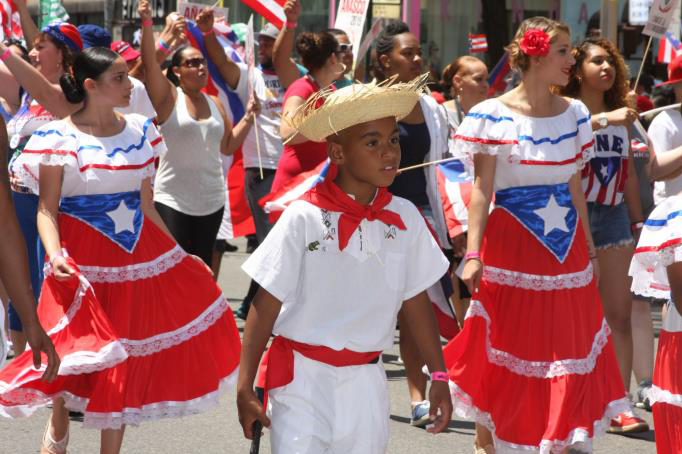 Under the Treaty of Paris, signed on December 10 of the same year, Spain agreed to cede all the captured islands to the United States. The Philippines and Cuba eventually gained full independence, but American control over Guam and Puerto Rico has survived to this day.
Under the Treaty of Paris, signed on December 10 of the same year, Spain agreed to cede all the captured islands to the United States. The Philippines and Cuba eventually gained full independence, but American control over Guam and Puerto Rico has survived to this day.
“Unwilling to commit”
“Puerto Rico and other territories captured during the years of the Spanish-American War had and still have an important geostrategic position. Therefore, Washington still cannot give up Puerto Rico and Guam, as well as military bases in the Philippines and Guantanamo Bay in Cuba. This is one of the manifestations of the policy of neo-colonialism, ”said Konstantin Blokhin, an expert at the Center for Security Studies of the Russian Academy of Sciences, in an interview with RT.
The United States made Puerto Rico a dependent territory, but did not declare the island a colony or any of the states.
Also related
Please enroll in the state: in Puerto Rico voted for joining the United States
The majority of the Puerto Rico referendum participants – 97% of those who voted – were in favor of the territory changing its legal. .. and they didn’t apply it, ”explained Yuri Rogulev, director of the Franklin Roosevelt Foundation for the Study of the United States at Moscow State University, in an interview with RT. M.V. Lomonosov.
.. and they didn’t apply it, ”explained Yuri Rogulev, director of the Franklin Roosevelt Foundation for the Study of the United States at Moscow State University, in an interview with RT. M.V. Lomonosov.
At the same time, there was a discussion in the US about the future status of Puerto Rico. The Foraker Act of 1900 introduced the position of a civilian governor appointed by the President of the United States in Puerto Rico, and created a congress whose lower house was elected, and the composition of the upper house was determined by the White House. Also, a free trade regime was introduced between Puerto Rico and the United States. American business began to invest in sugar production on the island.
In 1917, Puerto Ricans were granted American citizenship, though without the right to vote in presidential elections. The island received the status of an unincorporated organized territory of the United States.
The ambiguous status caused resentment among the people of Puerto Rico.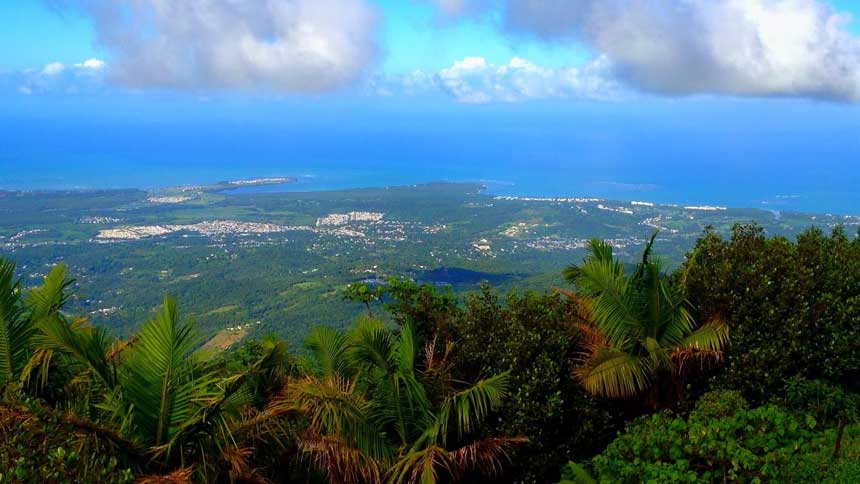 Political organizations were gaining popularity on the island, demanding either complete independence or joining the United States as a state, but Washington did not like this option.
Political organizations were gaining popularity on the island, demanding either complete independence or joining the United States as a state, but Washington did not like this option.
“During the days of Roosevelt and Truman, a number of US politicians thought about joining Puerto Rico, but most of the American establishment was against it. The United States not so long ago overcame the Great Depression and did not want to take on additional obligations, ”said Sergey Sudakov, corresponding member of the Academy of Military Sciences, in an interview with RT.
Due to Puerto Rico’s dependent status and economic difficulties, representatives of the island’s nationalist organizations repeatedly tried to raise uprisings against American domination, but all such uprisings were suppressed. However, Washington realized that it would not be possible to solve the problem of Puerto Rico solely by force.
In 1948, the inhabitants of the island were allowed for the first time to hold democratic elections for governor, which was Luis Munoz Marin. Initially, he advocated independence, but quickly realized that Washington would not allow his ideas to be realized, and engaged in the expansion of civil rights of the population and projects in the field of industrialization. Under Marina, the Constitution of Puerto Rico was adopted, which fixed the status of the commonwealth and the state freely associated with the United States for the island.
Initially, he advocated independence, but quickly realized that Washington would not allow his ideas to be realized, and engaged in the expansion of civil rights of the population and projects in the field of industrialization. Under Marina, the Constitution of Puerto Rico was adopted, which fixed the status of the commonwealth and the state freely associated with the United States for the island.
More than 20 US military bases were located on the island, where various tests were carried out and US military personnel were trained. After several incidents that led to the death of local residents, a wave of indignation arose in Puerto Rico, and some of the military facilities were transferred to the reserve in the early 2000s. In recent years, American politicians have raised the issue of resuming their full functioning, but due to the sharply negative reaction of the local population, this issue remains unresolved.
Despite the changes that took place in the second half of the twentieth century, Puerto Rico lags far behind the United States in basic socio-economic indicators. The per capita GDP on the island is about three times less than the US average. Due to a lack of funds, local governments have to close all public institutions, including schools, from time to time and declare that they cannot pay off the public debt. Starting in the mid-twentieth century, Puerto Ricans began to leave their island en masse, and New York formed the largest Puerto Rican community in the world – almost 1.5 million people, according to the 2016 census.
The per capita GDP on the island is about three times less than the US average. Due to a lack of funds, local governments have to close all public institutions, including schools, from time to time and declare that they cannot pay off the public debt. Starting in the mid-twentieth century, Puerto Ricans began to leave their island en masse, and New York formed the largest Puerto Rican community in the world – almost 1.5 million people, according to the 2016 census.
- Representatives of the Puerto Rican community in the United States
- © Wikimedia
In recent decades, several plebiscites have been held in Puerto Rico, the participants of which demanded that the island be annexed to the United States as a state. To consider these proposals in 2000, a special commission was even created in Washington, but experts are skeptical about the prospects for reunification.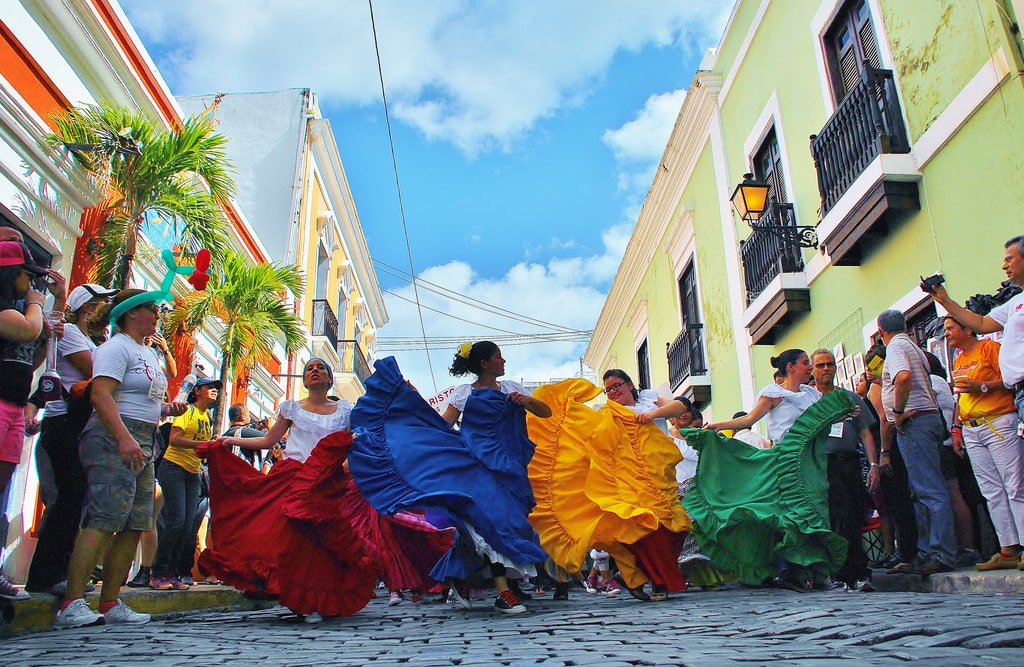
“Over 120 years of living together, the United States and Puerto Rico have developed many political and economic ties that are not easy to break. Washington needs the island for a number of reasons. But its full-fledged accession would be a terrible headache for the White House.
It would be necessary to tighten the economy of Puerto Rico, solve social problems, repay debts, deal with quite powerful organized crime. The US does not want to take on such responsibility. And therefore, in the foreseeable future, everything will remain as it is, ”concluded Rogulev.
Puerto Rico as the 51st state. America can expand the territory, but the Democrats power
March 18, 2021, 07:30
Article
In early March, a bill was introduced in the United States that calls for the expansion of the country’s territory by joining Puerto Rico. According to one of the authors of the document, Florida Democrat Darren Soto, this is necessary to help the inhabitants of the island get rid of the colonial heritage and solve their economic problems.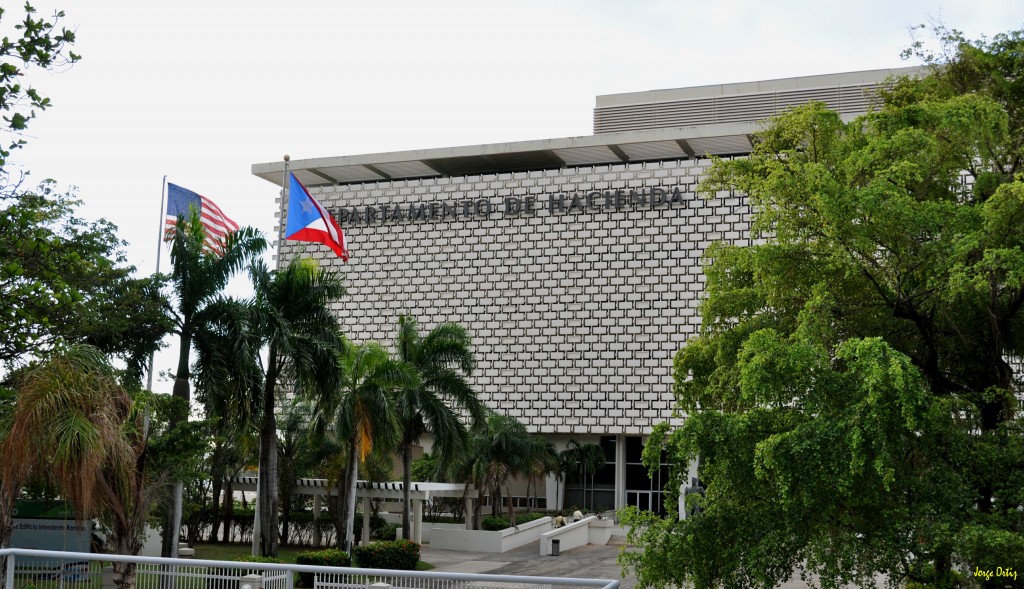 However, his idea was resisted by another representative of the Democrats, New York Congresswoman Alexandria Ocasio-Cortez, who believes that before annexing new lands to the country, it is necessary to make sure that the inhabitants of these territories really want it.
However, his idea was resisted by another representative of the Democrats, New York Congresswoman Alexandria Ocasio-Cortez, who believes that before annexing new lands to the country, it is necessary to make sure that the inhabitants of these territories really want it.
Puerto Rico is an island in the Caribbean with over 3 million people. For 123 years now, it has remained one of the associated American territories, which the Western media simply call the colonies. The supreme legislative power there belongs to the US Congress, which is in charge of foreign policy, defense, and local legislation. Executive power is in the hands of the governor.
Read also
Transgender senator and drug fine. What else did Americans vote for on Election Day?
Officially, Puerto Ricans are American citizens, but with reservations. They cannot vote in presidential elections and have only one representative with limited voting rights in Congress. At the same time, they pay payroll tax on US federal programs, such as medical assistance to the poor, the supplementary nutrition program, and others.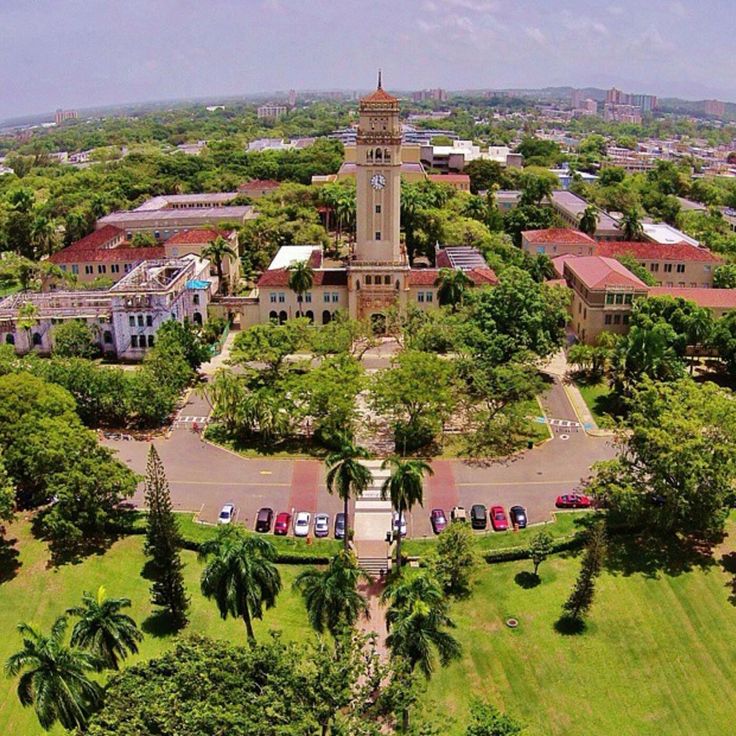
It is believed that the majority of Puerto Ricans, including some officials, want their island to become the 51st state of the United States, and they themselves become full-fledged Americans. Last November, 52% of local residents voted for this in a special referendum. This was the sixth plebiscite where Puerto Ricans were asked about their desire to join the US.
In 2012 and 2017, the majority of votes were also cast in favor of turning the archipelago into an American state, but, as The Hill noted, in the first case the outcome of the referendum seemed doubtful due to the fact that almost half a million voters left their ballots blank, and in the second – due to the low turnout, which amounted to only 23%. In addition, in 2017, the wording written in the ballots did not receive official approval from the US Department of Justice.
“We had Hurricane Maria and earthquakes and now COVID and in all these cases where Puerto Rico needs federal resources, federal support, federal action, we don’t have the ability to hold Washington officials accountable.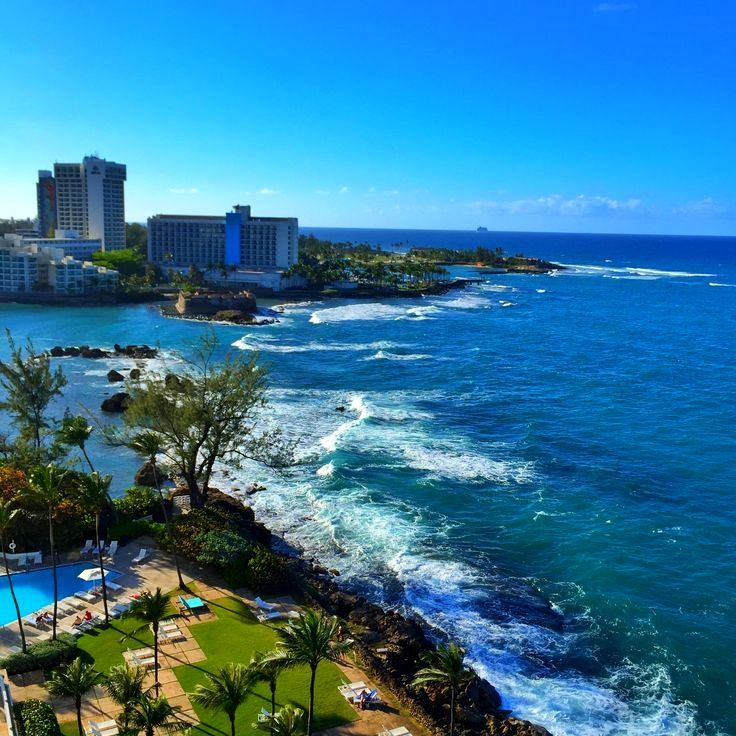 ” because they don’t have to earn votes in Puerto Rico,” the director of the Puerto Rico State Council organization, which advocates joining the island to the United States, quoted The Guardian as saying.
” because they don’t have to earn votes in Puerto Rico,” the director of the Puerto Rico State Council organization, which advocates joining the island to the United States, quoted The Guardian as saying.
Democratic territory
However, contrary to Puerto Rico’s desire to change its status, Washington has always been cool about this idea and has not taken any steps to achieve this. First of all, because of the money. Since 2015, the island has been bankrupt, the process of incorporating it into the country will require large expenses, and the debts of Puerto Ricans will fall on the shoulders of all US residents.
However, it seems that President Joe Biden, who has come to power, is ready to spend money. Even during his election campaign, the current president announced the need to invest in the island and support its inhabitants. According to him, he considers the joining of Puerto Rico to the United States as the best scenario, but will agree with any decision that is made on the ground.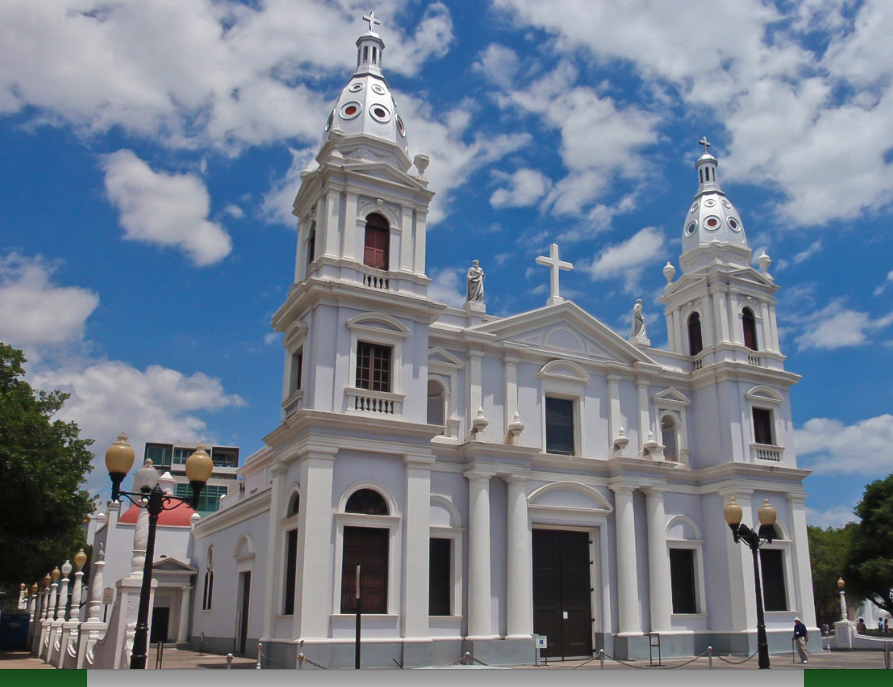
Two Democrats at once took care of the future status of the island in Washington – congresswoman from Florida Darren Soto and congresswoman from New York Alexandria Ocasio-Cortez. It is in their states that the two most numerous Puerto Rican diasporas in the United States live. Both politicians have different views on the future of the island and offer different initiatives in this regard.
So, in early March, Darren Soto once again submitted a bill to include Puerto Rico in the United States, declaring that “the colonial policy is no longer valid.” This document was also supported by Special Commissioner from Puerto Rico and member of the Republican Party Jennifer Gonzalez. According to Soto, changing the status of the island will help its inhabitants cope with a massive debt crisis, 40% unemployment and the devastation caused by Hurricane Maria in 2017.
See also
China on both sides of the border. History of the Taiwan question
If Puerto Rico is still included in the country, this will increase the number of vacant seats in Congress. Seven legislators will be sent from the island to Washington at once – two to the Senate and five more to the House of Representatives.
Seven legislators will be sent from the island to Washington at once – two to the Senate and five more to the House of Representatives.
This scenario is opposed by the Republicans, as most likely Puerto Ricans will vote for the Democrats. The inhabitants of the island did not have a relationship with Donald Trump. First, the ex-president criticized local authorities for inefficiently spending the funds allocated to them, and then said that Puerto Rico was too expensive for American workers and farmers. It ended up that Trump allegedly even wanted to sell the island or change it to Greenland.
Therefore, the accession of Puerto Rico to the United States is primarily beneficial to the Democrats. Representatives in the party have been talking about the possibility of achieving a preponderance in Congress in this way for more than a year. Along with Puerto Rico, the United States is also discussing the status of the capital District of Columbia, which is also not a state and does not have its own senators and congressmen in Washington. More than 700 thousand people live in this region, most of them are African Americans. They will almost certainly also vote predominantly Democrat. During his presidency, Donald Trump promised that he would never allow a revision of the status of the District of Columbia. However, as the Territory’s delegate Eleanor Holmes Norton recently stated, “the metropolitan area has never been closer to statehood.” The first hearings on this matter will begin in the House of Representatives on March 22.
More than 700 thousand people live in this region, most of them are African Americans. They will almost certainly also vote predominantly Democrat. During his presidency, Donald Trump promised that he would never allow a revision of the status of the District of Columbia. However, as the Territory’s delegate Eleanor Holmes Norton recently stated, “the metropolitan area has never been closer to statehood.” The first hearings on this matter will begin in the House of Representatives on March 22.
The right to choose
After another initiative by Soto, various activists and public organizations demanded that Congress first consider the Puerto Rico Self-Determination Bill already introduced in 2020. It was sponsored by Ocasio-Cortez and Congresswoman Nadia Velasquez. Their initiative calls for more than just joining the island to the United States, but a long-term and more diverse program that will give Puerto Ricans more choice – from complete independence to the possibility of becoming the 51st American state.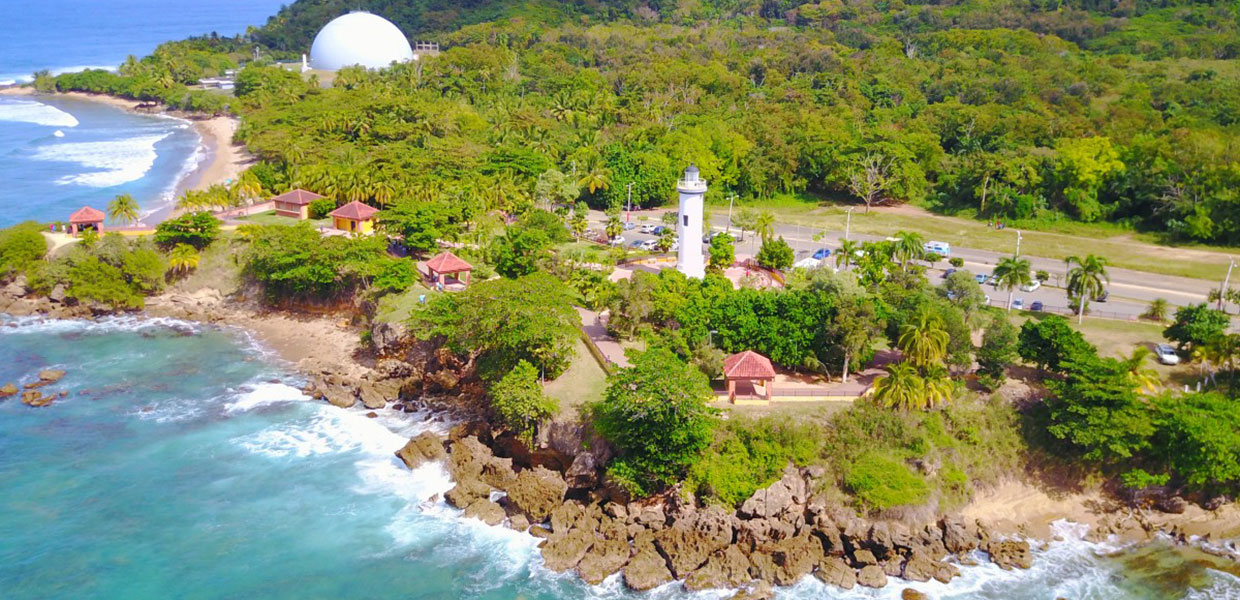
“The document should encourage the authorities to create a convention on the status of Puerto Rico, whose delegates will be elected by the inhabitants of the island. This body will develop a long-term solution to the question of the status of Puerto Rico, whether it be statehood, independence, free association, or any other option than the current territorial devices,” Ocasio-Cortez and Velasquez said in the article.
See also
“Act for the people”. The battle for electoral reform in the United States has unfolded.0003
According to politicians, the people of Puerto Rico were never asked to consider full independence, but were only faced with the fact of remaining a colony of the United States or becoming part of their territory, which the authors call “colonial climax”. The article also says that, despite the results of the referendums, there is actually no unequivocal opinion on the island about joining the United States. This is allegedly indicated by the low turnout, and the boycotts of voters, and the incorrectly formulated provisions of the plebiscites.
There are currently three main parties in Puerto Rico – the ruling New Progressive Party (PNP), which advocates statehood for the island, the People’s Democratic Party (PDP), which supports the current commonwealth status, and the Puerto Rico Independence Party.
Different views on the fate of the island from Florida and New York seem to emphasize the difference between the two diasporas. Those Puerto Ricans who live in New York, as a rule, left the island long ago and are more likely to lean towards its independence. At the same time, the diaspora in Florida began to grow actively only in the 21st century and is more immersed in what is happening in Puerto Rico. It is these people who are in favor of joining the archipelago to the United States.
The Puerto Rico status bill is expected to be considered in Washington before the end of spring. The creation of any new state will have to be approved by the Senate, and voting will require not just a majority, but a “supermajority” – 60 votes (now in the US upper house there are 50 seats for Republicans and 50 for Democrats, who also count on the decisive vote of Vice President Kamala Harris ).